 Want to make sure your ads stand out on Facebook and Instagram?
Want to make sure your ads stand out on Facebook and Instagram?
Have you tried Carousel Ads?
While many businesses use Carousel Ads solely to promote products, the ads also provide an excellent opportunity to showcase your brand’s unique narrative.
In this article, I’ll share how to use storytelling in carousel ads to promote your products and stand out from your competitors.
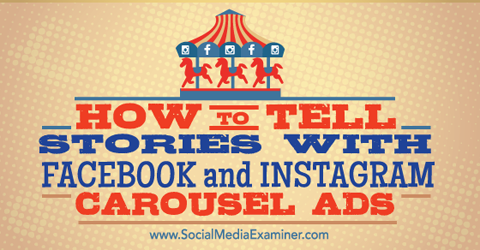
Listen to this article:
Where to subscribe: Apple Podcasts | Spotify | YouTube Music | YouTube | Amazon Music | RSS
#1: Grab Attention With the First Image
The first rule of storytelling (and advertising for that matter) is to start out strong. Be sure the first image in your carousel ad series grabs attention and makes sense on its own.
Since users may not scroll through all of the images in the series, you want to get your message across right away. Otherwise, you risk confusing your audience and wasting impressions.
For example, in Progressive's #ActYourAge carousel ads, the first image immediately stands out.
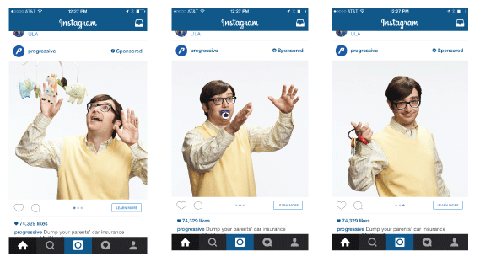
It uses a white background, which is very different from normal photography on the platform, and has a man playing with a baby's mobile (also known as a carousel). The picture is so unexpected and kooky, the user can't help but read the line below: “Dump your parents' car insurance company. #ActYourAge.”
While your first image shouldn't rely on any of the others to get its point across, it should still be intriguing enough to get users to swipe through to the end.
#2: Make Them Swipe
With any story, the point is to keep the reader engaged throughout and ultimately to read through to the end. Just as authors want to keep their readers interested, the same is true with carousel ads.
Once you've hooked the user with the first image, encourage continued engagement with the other images. This gives your brand more exposure and increased recall.
This carousel ad by Tesco Foods certainly elicits the “I can't stop swiping” response. To see the entire photo users must swipe through all of them. This is a great example of drawing a user through a story and, in this case, a very delicious-looking one.
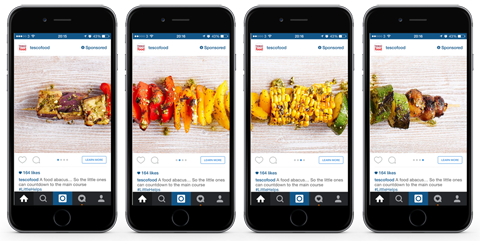
Test out this concept for your brand. Use Photoshop's splice tool (or play with pictures in your favorite design program) to cut separate images from a larger one.
Get World-Class Marketing Training — All Year Long!
Are you facing doubt, uncertainty, or overwhelm? The Social Media Marketing Society can help.
Each month, you’ll receive training from trusted marketing experts, covering everything from AI to organic social marketing. When you join, you’ll also get immediate access to:
- A library of 100+ marketing trainings
- A community of like-minded marketers
- Monthly online community meetups
- Relevant news and trends updates
#3: Create a Scene
Relating to your audience and evoking emotion are the other important parts of storytelling. To do these, provide the context necessary for users to feel like they're right there with you. Place them at the scene.
Choose photos carefully to create imagery for carousel ads. Then write copy to draw in your audience.
The TV series Wet Hot American Summer did a great job getting their audience members to envision themselves at Camp Firewood. Pictures show the characters hanging out and doing things with their friends. Plus the image and copy pairing is so clever that users not only picture themselves there, they also remember how they felt when they attended summer camp years ago.
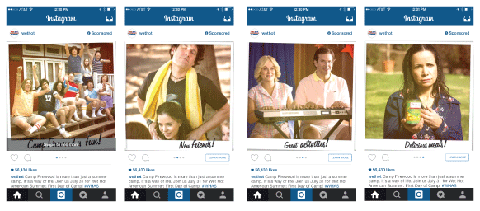
Obviously it's easier to set the scene when you're advertising something with a plot, like a television show or movie. However, for products and services, figure out how your brand fits into your customers' lives and create a scene that demonstrates it.

Discover Proven Marketing Strategies and Tips
Want to go even deeper with your marketing? Check out the Social Media Marketing Podcast! Publishing weekly since 2012, the Social Media Marketing Podcast helps you navigate the constantly changing marketing jungle, with expert interviews from marketing pros.
But don’t let the name fool you. This show is about a lot more than just social media marketing. With over 600 episodes and millions of downloads each year, this show has been a trusted source for marketers for well over a decade.
For example, if you're advertising a shirt, rather than show still images of it, think about the lifetime of the shirt. It goes from fresh and new in a package to being worn to being cleaned to being borrowed by a friend, etc. Photos that showcase a story create a plot, which evokes emotion from your customers.
#4: Think Sequentially
The order of events is essential to story comprehension. A well-edited sequence provides a natural pace to the story within your ad. Help move your users through your story.
Showtime did a great job incorporating natural sequence into its recent ads around the second season of Penny Dreadful. In just four photos you can tell the story is about a man on the run. He shoots someone, says goodbye to his girlfriend and runs away to a church.
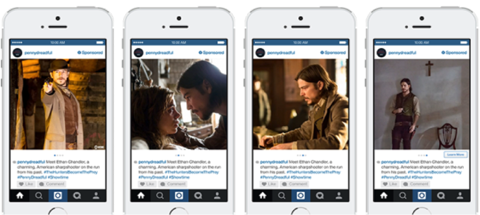
Keep in mind that sequence doesn't necessarily mean chronological order. It just means every action captured leads to a reaction.
#5: Incorporate Visual Variety
In videography, visual variety means shooting multiple shots of the same scene from different locations, angles, distance and so on. Choose an assortment of images to build a story and ensure visual interest.
In this jean ad from Target, each shot has a role in painting the big picture. It brings the audience into the design studio, shares what the studio is like and displays what kind of jeans are being made.
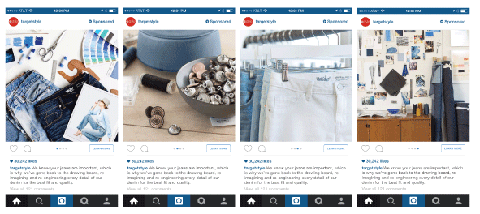
Most feature films show multiple images to set the scene. This is something you can easily do with carousel ads.
#6: Consider the Platform
No matter what your story, if you want to stand out, think about the channel first. Look at the platform's audience, whether it's Facebook or Instagram, and what they expect out of it. Then design an ad that speaks to them.
For example, Buick hit it out of the park on Instagram with these ads about its new 24-hour test drive service. The photography is beautiful (an Instagram must), and it uses a popular photo filter. Buick is also leveraging some of the top content categories that receive the most engagement by users on Instagram: fashion and fitness.
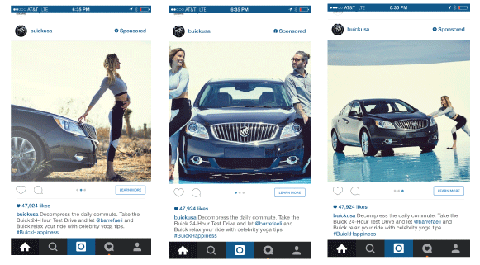
Develop a channel-specific story that makes the best use of the platform, and increases engagement with your intended audience.
#7: Leave Your Audience Wanting More
If there's a place to break the rules of storytelling, here it is: do not give a conclusion. Rather than offering a natural ending, lure users into clicking the “learn more“ button, so they can finish the story on your custom landing page.
For example, Sour Patch Slurpee takes viewers through the first four images of a Sour Patch Kid story. So much excitement is generated that users want to see what comes next. After they click, they're directed to a landing page that extended the “party” to its audience. This custom landing page asks users to share their #SPKSlurpeeSelfies.
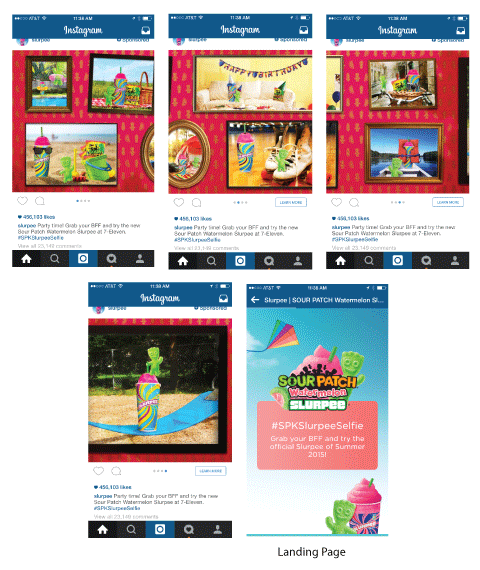
The purpose of carousel ads is to increase awareness and engagement. However, the ultimate goal is to get the audience to continue the experience and click through to a landing page. When that happens, you're able to establish a relationship, continue the interaction and possibly capture your users' information.
Final Thoughts
With today's cluttered ad space, it's getting harder to really stand out. If you want to build a breakthrough carousel ad, start by creating an engaging story that takes your audience along for the ride.
What do you think? Do you use storytelling in your carousel ads? What techniques are most effective? Which brands' ads really stand out? Please share your thoughts in the comments section below.
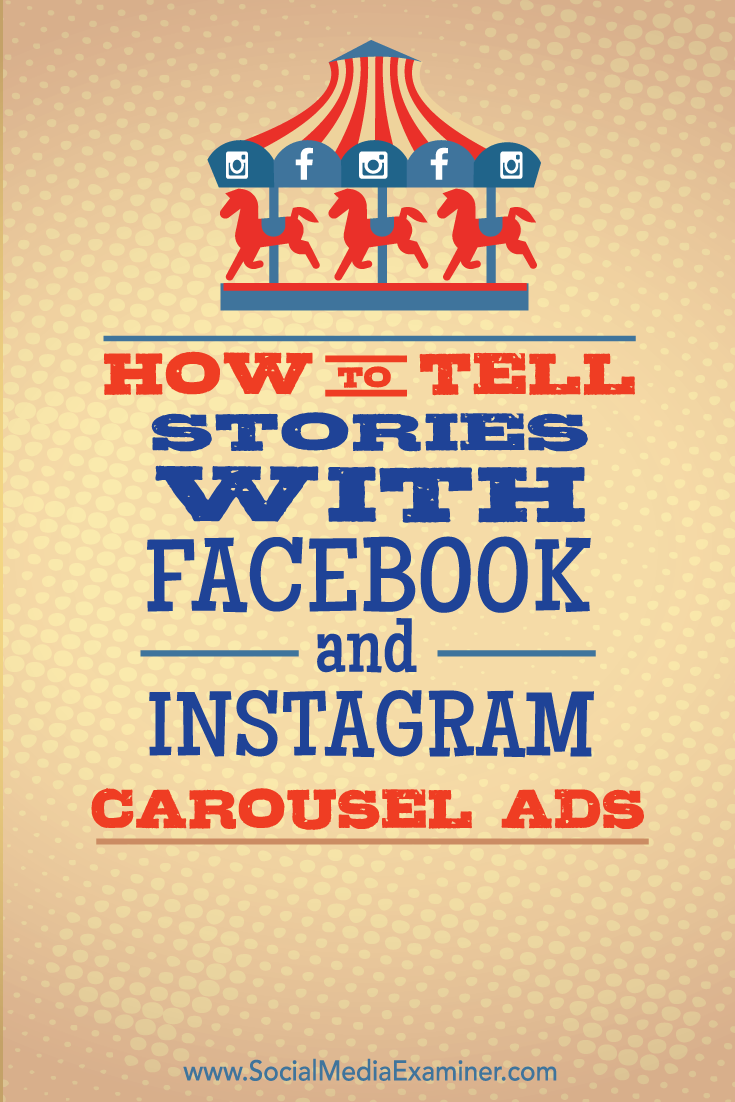
Attention Agency Owners, Brand Marketers, and Consultants

Introducing the Marketing Agency Show–our newest podcast designed to explore the struggles of agency marketers.
Join show host and agency owner, Brooke Sellas, as she interviews agency marketers and digs deep into their biggest challenges. Explore topics like navigating rough economic times, leveraging AI, service diversification, client acquisition, and much more.
Just pull up your favorite podcast app, search for Marketing Agency Show and start listening. Or click the button below for more information.

